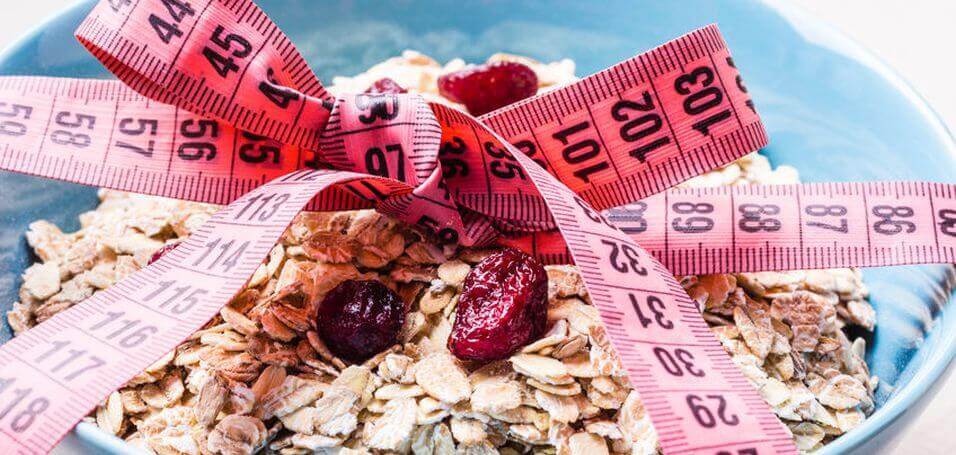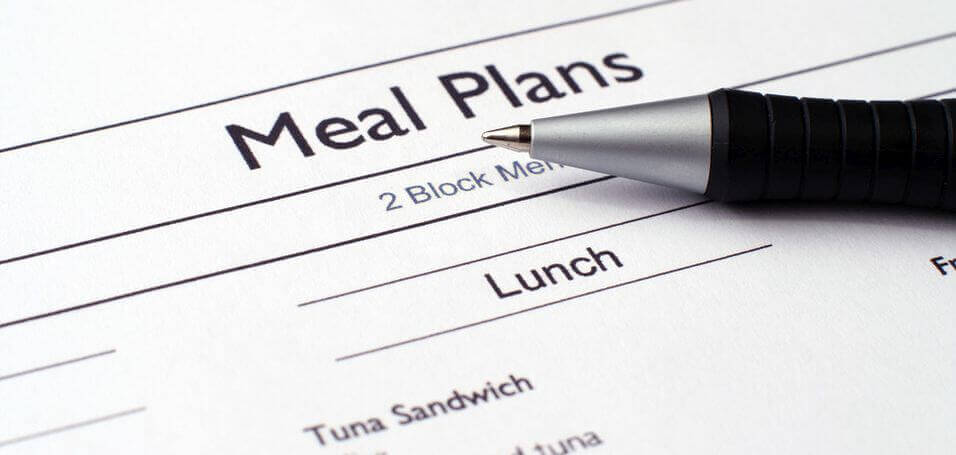What if I told you that dieting didn’t have to suck.
That you could lose fat and gain muscle without having to starve or deprive yourself.
That you could eat the foods that you like every meal, every day, and never have to battle with hunger or cravings.
And what if I told you that those meals could even contain…gasp…carbs, and…shriek…sugar.
Best of all, what if this “diet” were less of a diet in the way that most people think, but more like a sustainable lifestyle that you could enjoy for the rest of your life?
Well, these are the promises of the IIFYM Diet.
Freedom to eat what you want. Freedom from arbitrary rules, restrictions, and rigmarole. And freedom from the anxieties and worries that plague dieters everywhere.
Can it deliver, though? Is IIFYM really the cat’s pajamas?
Yes.
The principles of the IIFYM Diet, when properly applied, allow you to get the body you really want eating the foods you really love.
And you’re going to learn everything you need to get started right here in this article.
By the end, you’re going to know what the IIFYM Diet is, how it works, and how to use it to make meal plans for losing fat and gaining muscle that you really enjoy, and, more importantly, that really work.
Ready?
Let’s get to it.
- Why Is It Called the "IIFYM" Diet?
- How Does the IIFYM Diet Work?
- How to Use IIFYM to Get the Body You Want
- The Bottom Line on the IIFYM Diet
Table of Contents
+Why Is It Called the “IIFYM” Diet?

Let’s start with the name itself.
Why “IIFYM”?
Well, it’s short for “If It Fits Your Macros,” and while the method has been around for decades, the term has only caught on in recent years.
It wasn’t brainstormed by brilliant marketers or popularized by mainstream diet gurus, either.
Instead, it began as a smart-assed response to newbie diet questions in online bodybuilding forums.
Newb
Hey guys, can I eat some ice cream a couples times per week when I’m cutting?
Bodybuilder
OMG STFU IF IT FITS YOUR MACROS
Newb
…huh?
The phrase caught on, and then was shortened to just “IIFYM,” which has now become shorthand for what’s also known as “macronutrient-based dieting,” or “flexible dieting.”
And while you can generally trust what you hear on bodybuilding forums about as much as a CNN political news report, in this case, they were onto something.
Lo and behold, as far as your body composition goes, you really can eat whatever you want so long as “it fits your macros.”
I’m speaking from experience, here, too, as I’ve been using the principles of IIFYM for years now, and here’s what I’ve been able to achieve with my body:
I’ve also worked with thousands of people of all ages and circumstances, and emailed with thousands more that have applied what I teach in my books (which advocate flexible dieting) to build their best bodies ever.
The bottom line is you can too, if you simply follow the advice in this article.
How Does the IIFYM Diet Work?
At bottom, the IIFYM Diet is based on five simple principles:
- How many calories you eat is more important than what you eat.
- How those calories break down into macronutrients is just as important.
- You should eat the foods that you like.
- You should get at least 80% of your calories from minimally processed, nutritious food.
- Your meal timing should fit your schedule and preferences.
I think you can see why it’s also called “flexible dieting.”
IIFYM is all about customization, and, well, flexibility, which is why it’s so popular among fitness folk “in the know.”
Let’s take a closer look at each of these principles and how, together, they make for a diet unlike any other.
1. How many calories you eat is more important than what you eat.
You don’t gain weight by eating the “wrong” foods, and, by the same token, you don’t lose weight by eating “clean.”
You gain weight by eating too much food, and you lose weight by eating less food than your body requires to maintain its current body weight.
Yes, I’m talking about calories, because they matter– a lot.
You see, your body needs a certain amount of energy to do everything it needs to do every day to stay alive, and it must get that energy from the food that you eat.
You can measure these amounts of energy in calories, with one calorie representing the amount of energy required to heat one kilogram of water one degree Celsius.
Now, the relationship between how much energy you’re eating versus burning is known as “energy balance.”
Energy balance is incredibly important because it alone determines whether your weight goes up, down, or stays the same.
If you eat fewer calories than you burn, you’re in a state of “negative energy balance,” also called a “calorie deficit,” and this results in weight loss.
If you eat more calories than you burn, you’re in a state of “positive energy balance,” or a “calorie surplus,” and this results in…you got it…weight gain.
The mechanisms in play here are simple.
When you feed your body less energy than it needs to survive, it has to get that additional energy required from somewhere. And where do you think it goes first?
That’s right–your fat stores.
And when you feed your body more energy than it needs, what do you think it does with a portion of that energy surplus?
Yup, it stores it as body fat for future times when energy isn’t so abundant.
This is why, if you want to gain complete control over your body composition, then you need to control your caloric intake.
End of story.
That’s true regardless of what foods you eat, too.
If you eat too much of the “cleanest” calories in the world, you’ll gain weight, like clockwork. If you restrict your calories and eat nothing but junk, though, you’ll drop pounds (case in point).
There’s a catch here, though: you don’t want to merely lose or gain weight. You want to lose fat and not muscle, and gain muscle and not fat.
And when that’s the case, a calorie is no longer a calorie. Some are far more important than others, which brings us to our next point…
2. How those calories break down into macronutrients is just as important.

In the realm of body weight, calories are king. There’s no arguing that.
Macronutrients, though, rule the more important domain of body composition (what your body weight is comprised of in terms of muscle, fat, bone, water, and so forth).
First, a definition of terms.
“Macronutrients,” or “macros,” refers to three types of nutrients that your body needs large amounts of to stay alive:
- Protein
- Carbohydrate
- Fat
You can look at your food intake in terms of calories, but you can also look at in terms of macros, because one gram of protein and carbohydrate both contain about 4 calories, and one gram of fat contains about 9.
So, for example, you could simply aim to eat 2,000 calories per day any which way, or you could be more precise and aim for 200 grams of protein (~800 calories), 200 grams of carbohydrate (~800 calories), and 45 grams of fat (~450 calories).
This distinction is important because these nutrients do very different things in the body.
Protein, for example, is vital for preserving and building muscle mass. Carbs fuel your workouts, and indirectly aid with muscle growth, as well. Fats are needed for many things, ranging from absorbing the nutrients you eat to creating various hormones and keeping your hair and skin healthy and more.
All this is why your macros matter. A lot. Just as much as your calories.
If all you paid attention to were your calories, you’d probably make the same mistakes that most people make–too little protein, too many junk carbs, and too little healthy fat–and suffer the same fate (skinny fat with nutritional deficiencies).
Now, if you’re worried that juggling all these numbers is going to be too much, I understand.
Fortunately, it’s really not hard once you get the hang of it. In fact, in time, it becomes second nature (which makes for really good intuitive eating skills, I might add).
So, I’ve been throwing shade on “clean eating” because it guarantees little in the way of fat loss and muscle gain. That doesn’t mean you shouldn’t eat plenty of “clean” foods, though…
3. Get at least 80% of your calories from minimally processed, nutritious food.
Many people think the IIFYM Diet is all about eating copious amounts of junk food while still, “somehow,” having abs.
Take a peek at the #IIFYM hashtag on Instagram and you’ll understand why.
Sure, there’s a nod to nutrition here and there, but the theme is clearly ice cream, Pop Tarts, pizza, burgers, candy, and the like.
Well, the truth is this:
Just because you can get ripped eating oodles of junk food doesn’t mean that you should.
Remember, you can’t judge a person’s health by their body fat percentage or biceps size.
The reality is food is far more than just “macros.” It also provides our bodies with dozens of vital micronutrients that are needed to keep us healthy, happy, and performing our best.
That’s why the IIFYM Diet can be a boon or bane, depending on how it’s used.
Will hitting the drive-thru or pizza joint every now and then, or eating a bit of sugar or “empty calories” every day hurt you in the long run? Decidedly not.
But will allotting a large portion of your daily calories to nutritionally bankrupt fodder? Absolutely.
Slowly but surely, you’ll develop micronutrient deficiencies that can contribute to all kinds of health problems, impair mental and physical performance, and even blunt muscle gain by interfering with your body’s ability to recover from your workouts.
In that sense, “clean eaters” get a lot right. They may not understand why they struggle to improve their body composition, but they do understand the importance of nourishing their bodies.
Hence, this third rule of thumb–get at least 80% of your calories from nutritious foods, like these:
- Avocados
- Greens (chard, collard greens, kale, mustard greens, spinach)
- Bell peppers
- Brussels sprouts
- Mushrooms
- Baked potatoes
- Sweet potatoes
- Bananas
- Berries
- Whole grains like wheat, barley, oats, , brown rice
- Yogurt
- Eggs
- Seeds (flax, pumpkin, sesame, quinoa, and sunflower)
- Beans (garbanzo, kidney, navy, pinto)
- Lentils, peas
- Almonds, cashews, peanuts
- Salmon, halibut, cod, scallops, shrimp, tuna
- Lean beef, lamb, venison
- Chicken, turkey
There are many other “healthy” foods that could go on the list, and your list may look totally different, but you get the idea.
If it’s a fruit, vegetable, grain, starch, or protein that you have to prepare and cook yourself, it’s probably good to eat.
4. You should eat foods you enjoy every day.

You’ve probably heard that the best diet is the one you can stick to.
There’s a lot of truth in that old gnome.
No matter how “perfect” a diet might sound on paper, if you can’t stick to it consistently over the long term, it’s not going to work for you. Period.
That’s why IIFYM is a blessing for so many people.
When you can eat foods you actually like, every meal, every day, and when you can include some indulgences, you don’t feel like you’re “dieting” in the traditional sense.
Sure, you might be eating a little less or more calories than you’d like (depending on your goals), but on the whole, it’s a relatively smooth, painless experience. In time, you simply forget that you’re “on a diet.”
So, if all you’ve known thus far is some form of restrictive dieting, which, by the way, puts you at a greater risk of developing nutrient deficiencies and eating disorders, then you’re in for a treat with the IIFYM Diet.
Instead of depriving yourself for months and then flaming out in a week of gluttonous bingeing, you get to enjoy yourself along the way, heading cravings off before they can cause problems.
5. Your meal timing should fit your schedule and preferences.
When you eat doesn’t matter nearly as much as many people believe.
On the whole, so long as you’re sticking to your numbers, how to get there in terms of individual meals doesn’t really matter.
You can get the body that you want eating eat 3 or 8 meals a day, eating a large breakfast or skipping it, a la intermittent fasting, and eating as many carbs at night as you’d like.
The goal, then, when you’re setting up your meal plan, is first and foremost to make sure it fits your daily schedule and eating preferences.
You want to make sure that you’re eating more or less the way that you like, and that you’re not alternating between “uncomfortably stuffed” and “starving.”
Now, if you’re looking to gain muscle as quickly as possible, there are a few other things you should know.
- Studies show that eating about 30 grams of protein before and after workouts can help you gain muscle and strength faster over time.
- There’s evidence that eating a significant amount of carbs post-workout can help, too, mainly by reducing muscle breakdown rates.
- Eating about 30 grams of a slow-digesting protein like egg or casein before bed can help speed muscle recovery.
Basically, it’s smart–but not vital–to have a bit of protein before you work out, a bit after with some carbs, and bit before you go to bed every night.
How to Use IIFYM to Get the Body You Want

Now that we’ve covered the underpinnings of the IIFYM Diet, let’s look at how to turn them into an actionable plan.
Regardless of whether you want to lose fat or gain muscle, there are just three steps:
Let’s see how this plays out for both losing fat and building muscle.
How to Use the IIFYM Diet to Lose Fat
As you know, the only way to lose fat is to eat fewer calories than you burn.
That’s why the first thing that you have to do when you want to get leaner is calculate how many calories you should eat every day.
And to do this, you need to know approximately how many calories you’re burning every day, otherwise known as your “total daily energy expenditure,” or “TDEE.”
You can calculate this yourself using something like the Katch McArdle formula, or you can simply use the calculator below that I’ve built.
The next step is calculating your calorie deficit.
I recommend you a moderate calorie deficit of 20 to 25%. This is large enough to burn significant amounts of fat without causing unwanted side effects associated with “starvation dieting.”
So what this means is you want to set your daily calorie intake to 75 to 80% of your TDEE.
For example, my TDEE is about 3,000 calories, so when I want to lose weight, I set my intake to about 2,300 calories per day.
Lastly, you want to set up your macros. Here’s how to do it right:
- Eat 1 to 1.2 grams of protein per pound of body weight per day.
If you’re very overweight (over 25% body fat for a man and over 30% body fat for a woman), then drop this to 1 gram of protein per pound of lean body mass per day.
- Eat 0.2 to 0.25 grams of fat per pound of body weight per day.
If you’re very overweight, then set this to 0.3 to 0.35 grams of fat per pound of lean body mass per day.
- Get the rest of your calories from carbs.
You may be surprised to see I don’t recommend low-carb dieting.
That’s because low-carb diets aren’t enjoyable for most people, and research shows that so long as protein intake is high, they aren’t better for fat loss.
You can do all of this yourself in Excel, but it’s tedious. That’s why I had a nifty calculator built that makes it a snap:
As you can see, this calculator allows you to work out your TDEE, set your calorie deficit, and set up your macros as you wish.
And that leaves us with the final step: create a meal plan.
We recall that this mostly entails creating meals that you’ll like to eat, and that, on the whole, fit your macros, but there’s a bit more you should know to get the most out of your meal planning.
Check out this article to learn more.
How to Use the IIFYM Diet to Gain Muscle

When you want to lose fat, you eat less than your TDEE. When you want to maximize muscle growth, you eat a bit more.
I explain why in this article, which I highly recommend you read, but what it boils down to is this:
A slight calorie surplus allows your muscles to grow as efficiently as possible, so, when you want to maximize muscle growth, you should eat 10 to 15% more calories than you burn.
The macronutrient breakdown for “lean bulking” is different as well:
- Eat 1 gram protein per pound of body weight per day.
- Eat 0.3 grams of fat per pound of body weight per day.
- Get the rest of your calories from carbs.
That’s it, and again, the calculator above will help you work it out quickly and easily.
The Bottom Line on the IIFYM Diet
Every so often, there’s a new spate of headlines proclaiming that “diets don’t work.”
That no matter what method people try, they simply can’t lose weight and keep it off.
Hell, you’ve probably experienced this yourself.
Well, it’s true…to a point.
Most diets suck, and for several reasons:
- Most have you eat far too few calories, which leaves you feeling miserable.
- Most have you eat far too little protein, which accelerates muscle loss.
- Most severely restrict the foods you can eat, which makes it damn near impossible to stick to..
That’s why a new approach is needed. One that allows you to control your body composition with ease, eating foods that you actually like.
And that’s what the IIFYM Diet is all about.
Give it a swing and I think you’ll never look back.










